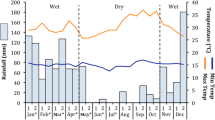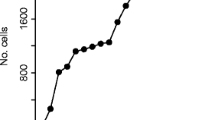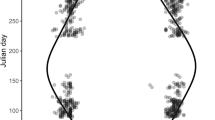Abstract
We investigated the long-standing premise in behavioral ecology that the environment affects behavior and demography. We did this by evaluating the extent to which year-to-year variability in the behavioral ecology of a nonhuman primate population could be modeled from meteorological patterns. Data on activity profiles and home range use for baboons (Papio cynocephalus) in Amboseli, Kenya, were obtained over a 10-year period for three social groups: two completely wild-foraging ones, and a third that supplemented its diet with refuse from a nearby tourist lodge. The relationships across years among activity budgeting, travel distance, group size, and measures of temperature and rainfall patterns differed among the social groups. Although meteorological variation generally correlated with behavioral variation in the completely wild-foraging groups, different weather variables and direction of relationships resulted for each group. In addition, different relationships among variables were found before and after home-range shifts. The food-enhanced group spent half as much time foraging as did the other groups and therefore could be used to evaluate the relative extent to which foraging time was a limiting factor for resting and social time. Under their relaxed ecological conditions, the food-enhanced animals increased resting time much more than social time. These findings, combined with supplementary information on the population, lead us to suggest that baboons use a suite of interrelated responses to ecological variability that includes not only changes in activity budgets, but also home-range shifts, changes in the length of the active period, and changes in group size through fissions. Moreover, our results imply that group differences as well as interpopulational and interspecific differences in behavioral ecology provide significant sources of variability. Therefore, social groups rather than populations may be the appropriate unit of analysis for understanding the behavioral ecology of baboons and other highly social primates. The different patterns we observed among groups may have fitness consequences for the individuals in those groups and thereby affect population structure over time.
Similar content being viewed by others
Author information
Authors and Affiliations
Additional information
Received: 18 February 1995/Accepted after revision: 6 January 1996
Rights and permissions
About this article
Cite this article
Bronikowski, A., Altmann, J. Foraging in a variable environment: weather patterns and the behavioral ecology of baboons. Behav Ecol Sociobiol 39, 11–25 (1996). https://doi.org/10.1007/s002650050262
Issue Date:
DOI: https://doi.org/10.1007/s002650050262




